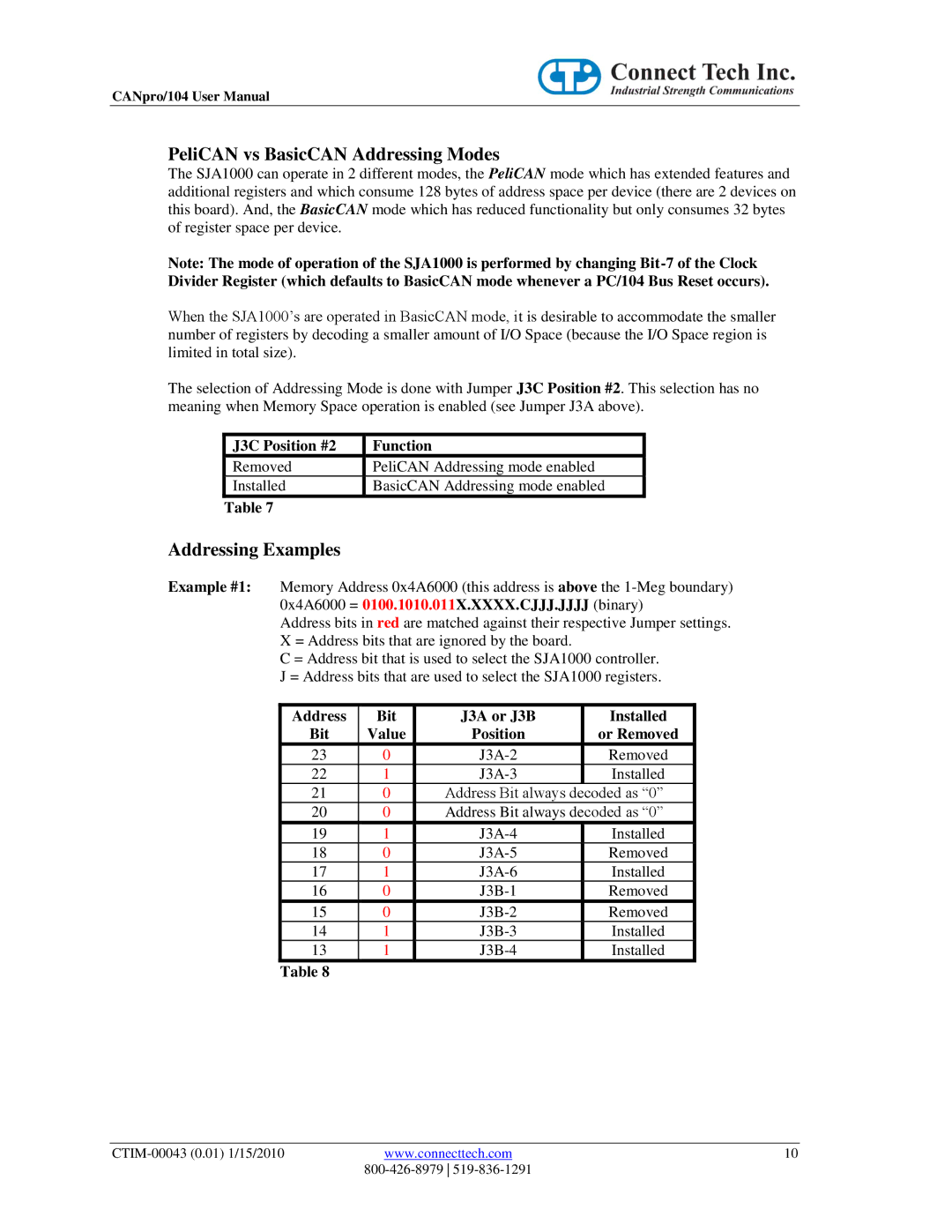
CANpro/104 User Manual
PeliCAN vs BasicCAN Addressing Modes
The SJA1000 can operate in 2 different modes, the PeliCAN mode which has extended features and additional registers and which consume 128 bytes of address space per device (there are 2 devices on this board). And, the BasicCAN mode which has reduced functionality but only consumes 32 bytes of register space per device.
Note: The mode of operation of the SJA1000 is performed by changing
When the SJA1000’s are operated in BasicCAN mode, it is desirable to accommodate the smaller number of registers by decoding a smaller amount of I/O Space (because the I/O Space region is limited in total size).
The selection of Addressing Mode is done with Jumper J3C Position #2. This selection has no meaning when Memory Space operation is enabled (see Jumper J3A above).
J3C Position #2 | Function |
Removed | PeliCAN Addressing mode enabled |
Installed | BasicCAN Addressing mode enabled |
Table 7 |
|
Addressing Examples
Example #1: Memory Address 0x4A6000 (this address is above the
Address bits in red are matched against their respective Jumper settings. X = Address bits that are ignored by the board.
C = Address bit that is used to select the SJA1000 controller. J = Address bits that are used to select the SJA1000 registers.
Address | Bit | J3A or J3B | Installed |
Bit | Value | Position | or Removed |
23 | 0 | Removed | |
22 | 1 | Installed | |
21 | 0 | Address Bit always decoded as “0” | |
20 | 0 | Address Bit always decoded as “0” | |
19 | 1 | Installed | |
18 | 0 | Removed | |
17 | 1 | Installed | |
16 | 0 | Removed | |
15 | 0 | Removed | |
14 | 1 | Installed | |
13 | 1 | Installed | |
Table 8
www.connecttech.com | 10 | |
|
|
